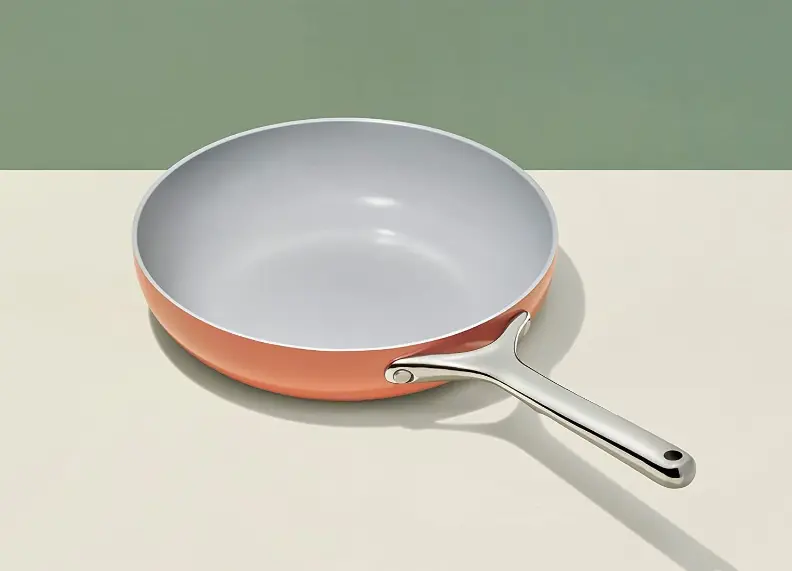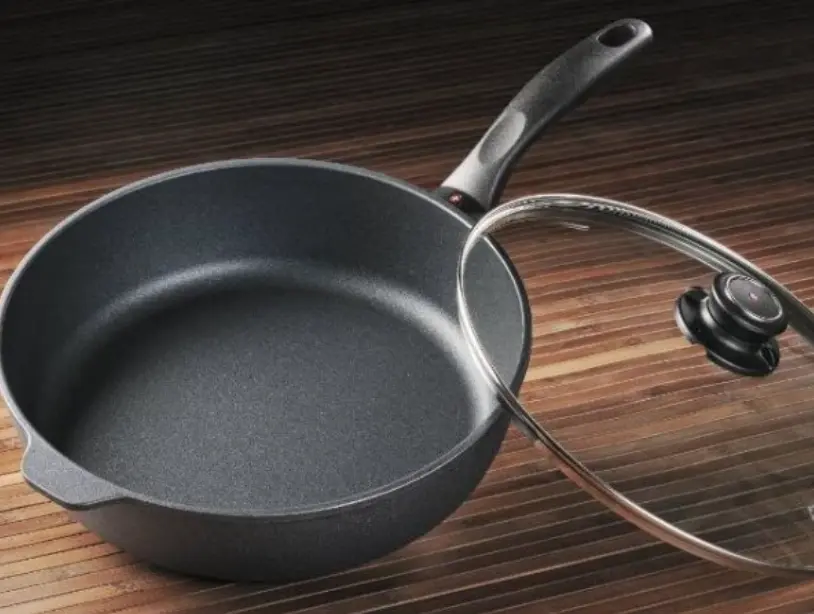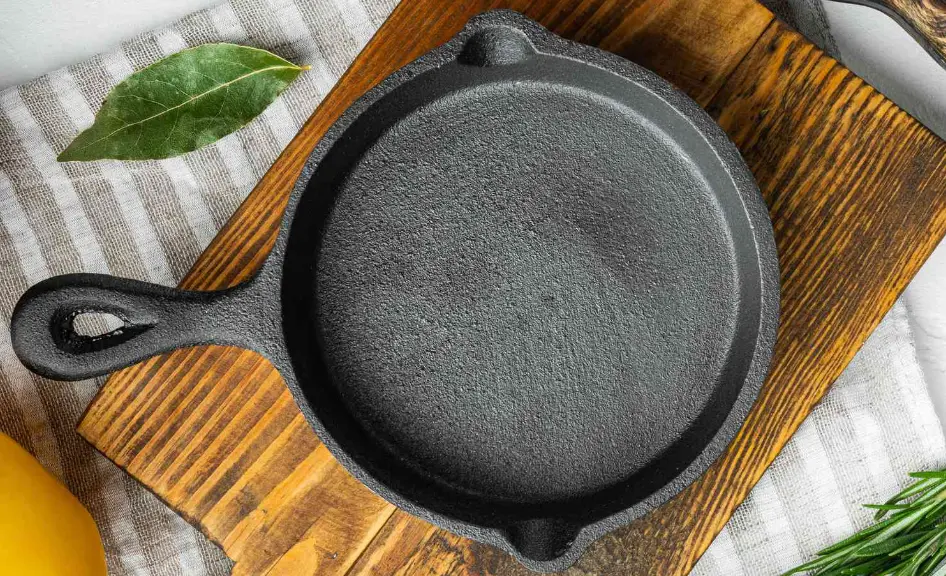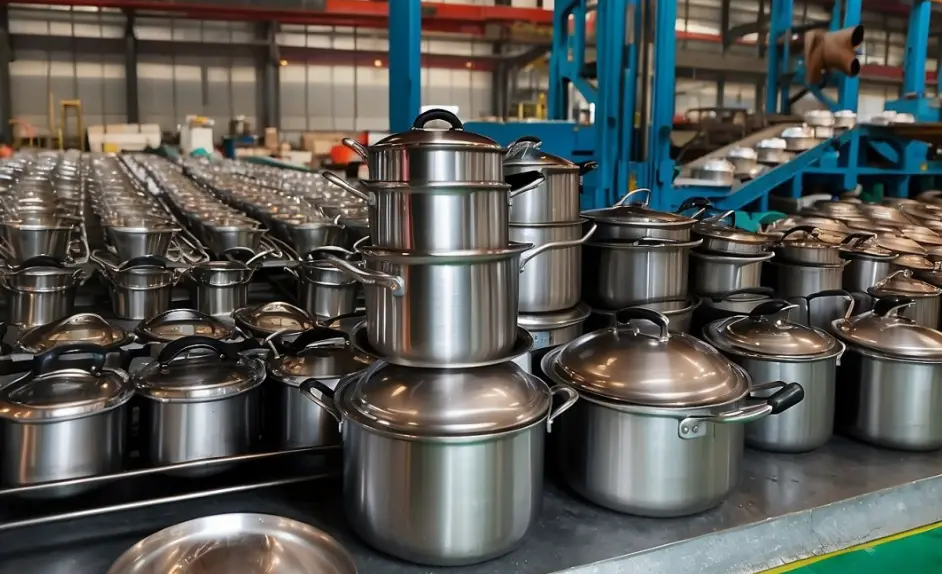
When we want to understand which non-stick pan is the safest, we first need to understand the different types of non-stick pans on the market. By comparing the coating materials, advantages and disadvantages, and health effects of these cookware, we can better evaluate which non-stick pan is the safest.
Types Of Non Stick Pans
PTFE (Teflon) Coated Non-Stick Pan
PTFE-coated non-stick pans are the most traditional and common choice. They are widely used in a variety of non-stick pan products. The PTFE coating itself is non-toxic. When the Teflon coating is heated to a high temperature (usually considered to be over 350°C), it may begin to decompose and release harmful substances. However, in daily cooking, it is difficult for us to reach such high temperatures, so the Teflon coating is safe under normal use. Users should pay attention to avoid long-term high-temperature dry burning when using it to prevent damage to the coating.
In addition, the PTFE coating is easily scratched and damaged, causing the coating to fall off. Therefore, more kitchenware manufacturers produce honeycomb non-stick pans, which are essentially PTFE-coated non-stick pans. Through the honeycomb network structure design, the PTFE coating is not easily damaged, and the service life is longer and safer.

Ceramic Coating Non-Stick Pan
Ceramic coatings are a relatively new option. Ceramic coatings are made of natural mineral materials and do not release harmful substances even at high temperatures.
Ceramic coatings are not as non-stick as PTFE coatings, but they are more stable at high temperatures and are less likely to release harmful substances, so they are favored by more and more consumers. Ceramic coatings are heat-resistant, but frequent and drastic temperature changes may cause the coating to crack or fall off, such as putting a hot pan directly into cold water, which can easily cause the coating to crack. Ceramic coatings are less durable, and their non-stick properties decay faster over time and with increasing frequency of use.

Stainless Steel Non Stick Cookware
Stainless steel cookware do not have a true non-stick coating, so their non-stick effect may be weaker than that of specialized non-stick cookware. However, with the correct use and maintenance techniques, stainless steel pans can also achieve a certain degree of non-stick effect. Regular maintenance of stainless steel pans, such as using grease to evenly apply a layer of oil inside the pan, heating it to a slightly hot state, and then cooling it to dry, can enhance the non-stick properties of the pan. Stainless steel pans do not have a coating, so there is no risk of coating decomposition or chemical seepage, making it a very safe choice.

Cast Iron Pan
The cast iron pan itself does not have natural non-stick properties, but after boiling, a layer of oil film can be formed. This oil film is a natural anti-stick surface that can reduce direct contact between food and the bottom of the pan, thereby achieving a certain non-stick effect. Through proper use and maintenance, this natural non-stick oil film can be maintained for a long time.

So Which Material Of Non-Stick Pan Is The Safest?
From the above types of non-stick pans, ceramic coating non-stick pans are widely considered to be the safest and have good non-stick properties. As a professional kitchenware manufacturer, I also recommend you to use stainless steel pans or cast iron pans. They are also very safe choices. Although their non-stick performance is not as good as ceramic coating non-stick pans, their service life is much longer than that of ceramic coating non-stick pans.
Advantages Of Well-Known Brands In Non-Stick Pan Safety
Big brands usually have strict quality control procedures to ensure that every production link meets high standards. These quality control measures include:
Strict Quality Control
Raw material testing: Ensure that all materials do not contain harmful substances such as PTFE and PFOA.
Manufacturing process monitoring: Strict monitoring is carried out at each production stage to ensure that the coating is evenly and firmly attached to the pot body.
Finished product inspection: Each finished product will undergo strict inspection before leaving the factory, including non-stick performance test, scratch resistance test and heat resistance test to ensure that the product meets safety standards.

Third-Party Certifications And Standards
Big brands usually obtain multiple third-party certifications and meet international standards, which further ensures the safety of their products:
ISO certification: Many big brands have passed international quality management system certifications such as ISO 9001 to ensure that the manufacturing process meets high standards of quality control requirements.
NSF certification: Some brands have passed the certification of the National Sanitation Foundation (NSF) of the United States to ensure that the products meet food safety and hygiene standards.
FDA approval: Non-stick pans sold in the US market need to be approved by the US Food and Drug Administration (FDA) to ensure the safety of the coating materials.
Choose Big Brands
By full quality management and advanced manufacturing technologies, big brands on the whole have higher safety of non-stickpan. With the help of top brand products, you can obtain a secure and long-lasting non-stick pans. So when choosing a non-stick panWhen buying, you should give priority to purchasing famous brands of products so that the product can better guarantee safety and service life.
Summary
When you want to get the safest best non toxic non stick pan, you’d better choose from ceramic coating non stick pan, stainless steel pan or cast iron pan, and further choose according to your other usage requirements, such as service life. When you focus on service life, stainless steel non stick cookware is a better choice, and when you focus on non-stick performance, ceramic coating non stick pan is a better choice.
In addition, brand selection is also a very important factor. Cookware produced by big brands is safer and healthier.